This article covers the recognition and awards granted to Milwaukee industry and its employees who worked to provide the United States and its allies with the munitions, equipment, and supplies for the war effort. Collectively, along with employees from other manufacturing companies across the United States, they helped to achieve victory in Europe and victory over Japan.
During the war, factory inspection visits were frequent since the military had contracted for and was paying for the munitions and supplies produced, and had also paid for many of the factory expansions. Inspections were necessary to ensure product quality, resolve bottlenecks, check progress and oversee the provisions of the contract. The most prestigious visit, however, was largely ceremonial—and unannounced visit by President Franklin D. Roosevelt.
In late September 1942, President Roosevelt made an extended inspection tour of the country’s war material manufacturing companies, military training facilities and military hospitals. He traveled by train, going west through the northern states, south through the west coast, and returning through the southern states. His train stopped in Milwaukee on September 19th, to allow him to visit the Allis-Chalmers factory in West Allis.
Roosevelt, who was handicapped at age 39 due to poliomyelitis, traveled through the factory via a large, open-top, convertible. He was accompanied in the vehicle by Governor of Wisconsin Julius Heil, Allis-Chalmers chairman of the board Max Babb, Allis-Chalmers president Walter Geist, factory manager James White, and General B. Somervell. The press was allowed to accompany Roosevelt’s tour, but information was temporarily impounded for security reasons. The press was eventually allowed to report on the visits in early October.
At the time, the Allis-Chalmers facility Roosevelt toured was manufacturing a variety of materiel for the war including steam turbines for ships, submarine motors, generators, and electrical switch gears.
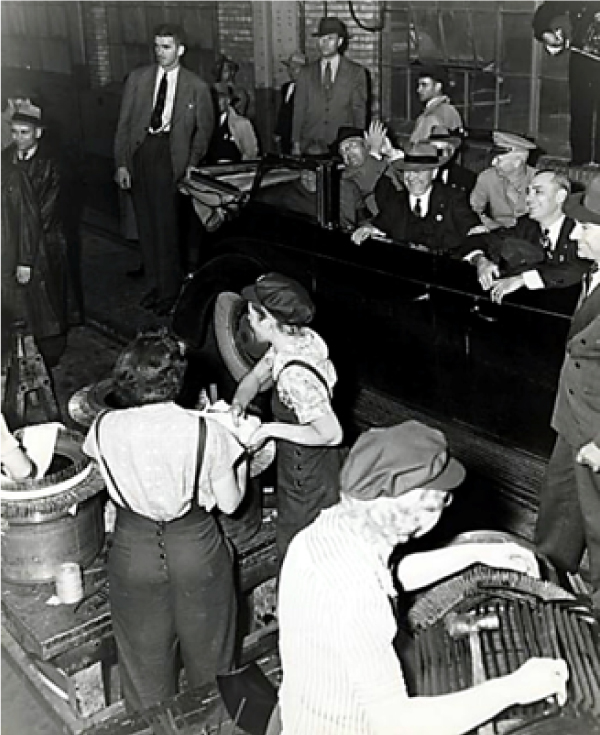
During World War Two, the US Army and Navy established an award to encourage industrial mobilization and the production of war materials. The award was presented to companies who were particularly outstanding in production for the war effort. The Army-Navy “Excellence in Production” award name was typically shortened to the ‘E’ Award, likely because the banner presented to companies had a large ‘E’ in its center.
Of the more than 85,000 companies directly involved in producing materials for the US military’s war effort, the award was granted to only 5% (4,283 facilities). Sixty-eight Milwaukee-area companies received the award—several for more than one factory and for multiple times. A total of 268 awards were granted to Milwaukee war facilities.
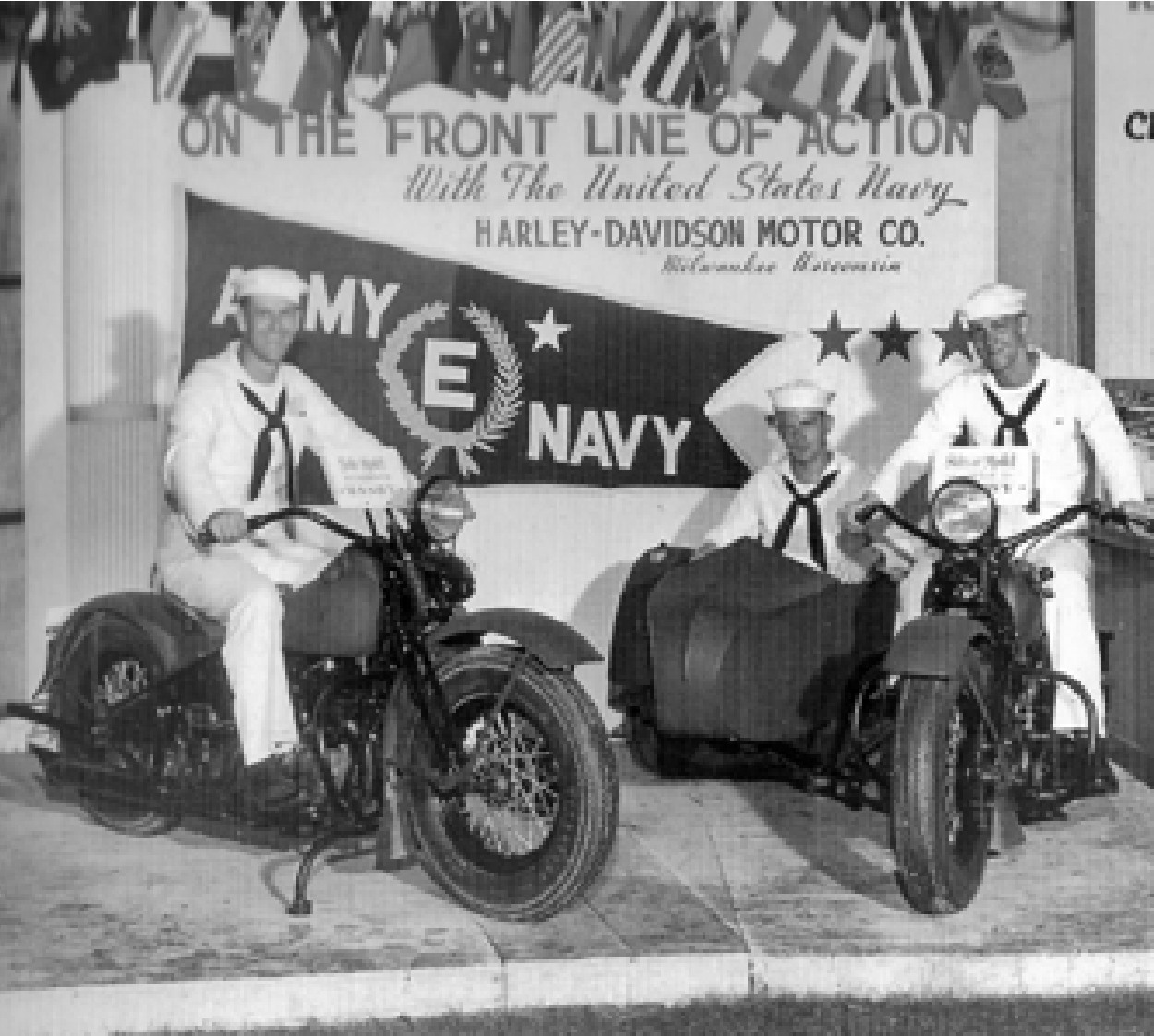
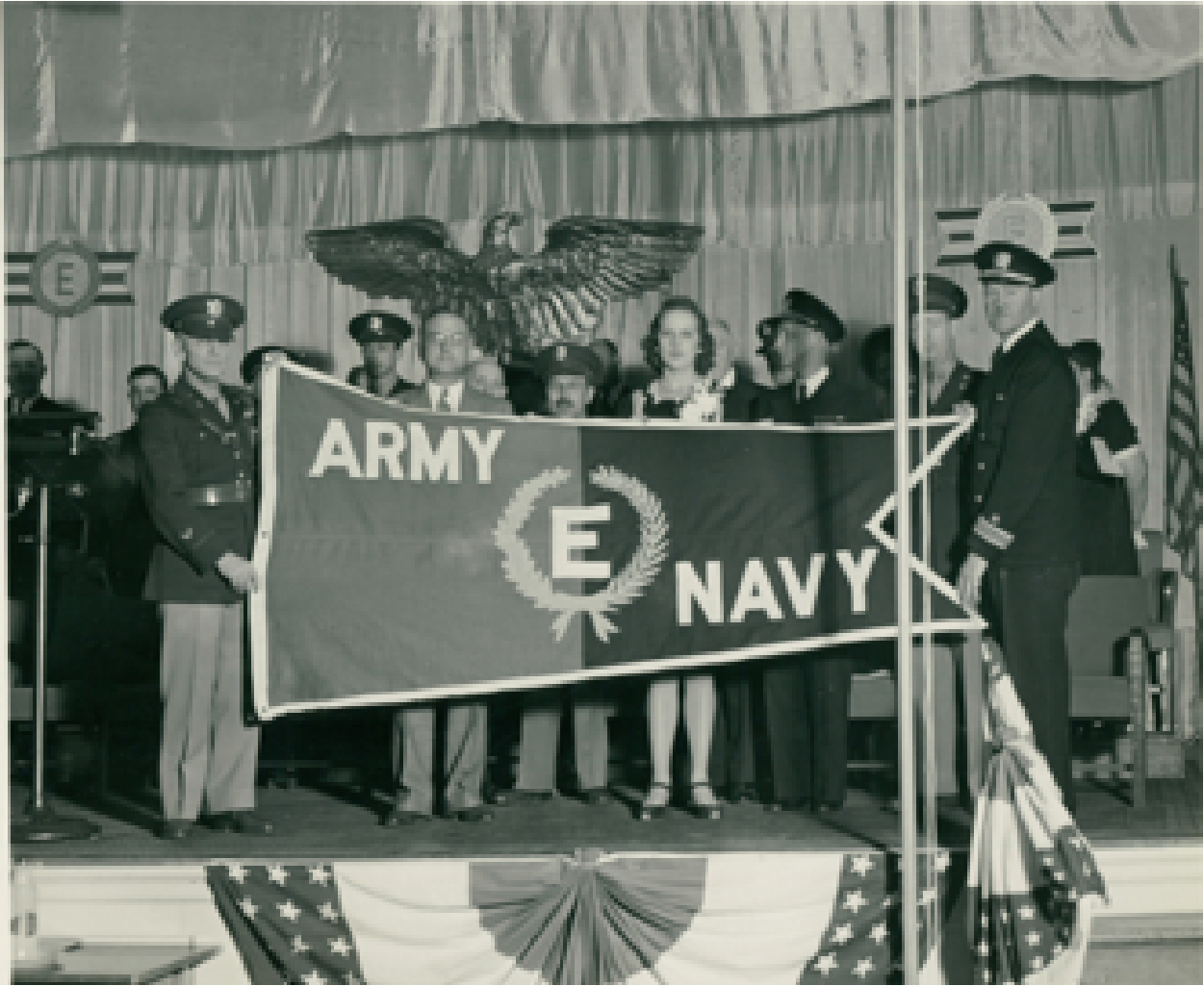
The award was a merger of three separate awards that had formerly existed: the Navy ‘E’, the Army ‘A’ and the Army-Navy Munitions Board ‘Star.’ All factories engaged in war production were eligible to receive the award, including government and privately owned plants as well as contractors. An Award Board was established to review recommended plants and determine those eligible for awards. The factors used in determining the awards were:
Note that safety is measured, although it’s just one factor associated with a number of related issues and was obviously a distant second to production and quality statistics. The US was in a war, and production was obviously considered of higher importance than employee safety. We’ll come back to that topic later in this series, because the statistics show that a substantial number of employees were injured on the job during the war.
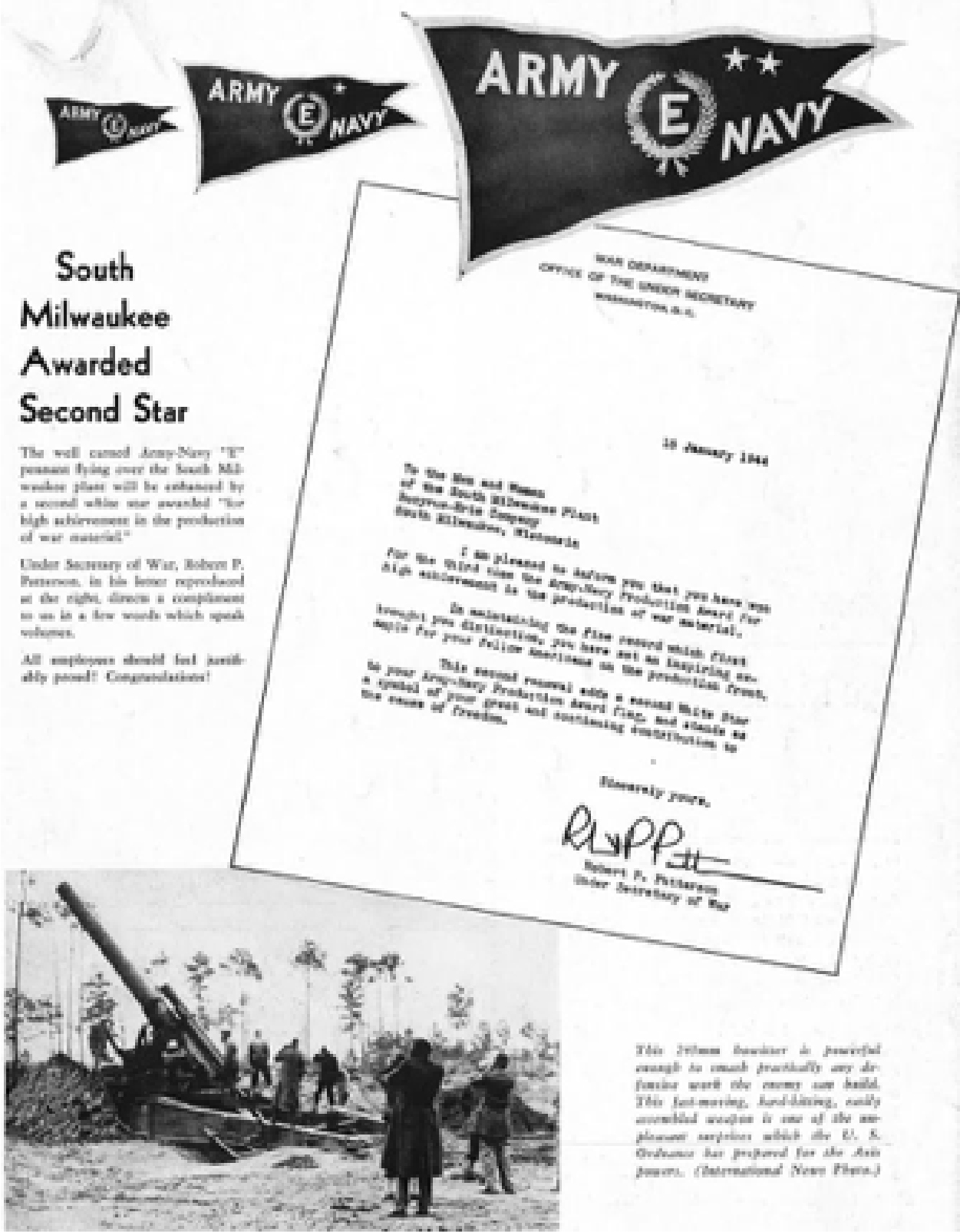
Typically, a plant-wide ceremony was held to present the award, with an Army officer and a Navy officer present. The company usually assembled all the employees involved in production. A pennant was presented, which was often hoisted and flown as part of the ceremony. Employees present were then presented with individual pins, to recognize their contributions to the achievement.
Plants that maintained an outstanding record of performance for six months after receiving their initial award could receive an additional award, signified by a star which was added to the pennant. A small percentage of facilities earned stars—a handful of plants in the United States earned as many as six stars by the end of the war. In the Milwaukee area, Falk, Louis Allis, Lakeside Bridge and Steel, and Nordberg received the award five times.
The program continued until December 5, 1945—three months following the end of the war.
A list of the known ‘E’ awards granted to Milwaukee-area companies is appended to this article.
The following is a list of the company, and their facilities, that received Army-Navy awards for Excellence in Production—known more commonly as the ‘E’ awards.

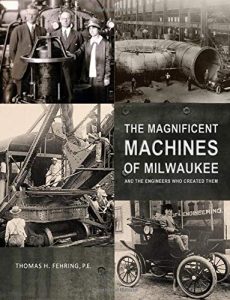
Tom Fehring has written extensively about Milwaukee-area industry, highlighting innovation that resulted in the formation of numerous companies that employed hundreds of thousands of Milwaukeeans. His latest book, entitled “The Magnificent Machines of Milwaukee,” is available for sale at the Milwaukee County Historical Society, Historic Milwaukee, Boswell Books, and on Amazon.com.